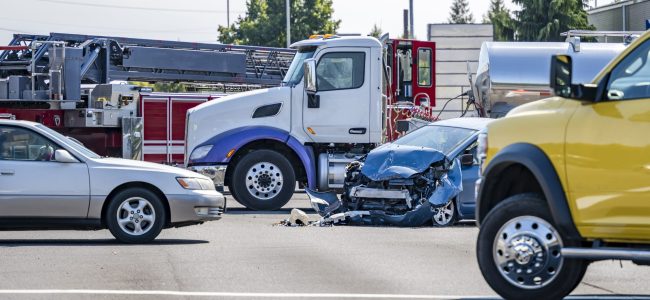BlogLine
Connecticut Appellate Court affirms “green means go”
10/1/24

By: Brayson S. Grant
This Appellate Decision arises out of a June 13, 2018 motor vehicle accident in Hartford, Connecticut. In Jose Sanchez v. City of Hartford, et al. (AC 46228), Plaintiff Jose Sanchez was entering an intersection on his motorcycle and had a green light. At the same time, Officer Davis (a Hartford Police Officer) was driving his vehicle to an emergency call when he drove through a red light. Officer Davis activated the lights and sirens of his police cruiser while he entered the intersection (not before). Plaintiff’s motorcycle collided with Defendant’s police cruiser. Following the accident, Plaintiff brought an action sounding in negligence against Officer Davis and the City of Hartford, alleging a violation of C.G.S. §14-283 (a Connecticut statute concerning the rights and duties of emergency vehicles). Defendants denied liability and argued that Plaintiff was contributorily negligent. After a multi-day jury trial, the jury found Officer Davis negligent and awarded a verdict to Plaintiff of $1,069,649.04. Id.
In the charge presented to the jury, the trial court instructed that: ‘‘[n]egligence is the doing of something which a reasonably prudent person would not do under the circumstances’’ and that ‘‘[t]he use of proper care in a given situation is the care which an ordinarily prudent person would use in view of the surrounding circumstances.’’ Sanchez v. Hartford (AC 46228). The trial court explained that ‘‘to find [Davis] negligent, [the jury] must find that he proceeded through the red light without due regard as set forth in” C.G.S. §14-283. Id. The jury also heard various common-law principles of negligence.
On appeal, the Defendants argued immunity under the doctrine of sovereign immunity and further argued that the jury instructions were “prejudicial, irrelevant, and resulted in jury confusion.” Id. The crux of the Defendants’ argument was that the jury should have been instructed “only in accordance with C.G.S. §14-283 once the requirements of the statute were satisfied, and not with common-law principles of negligence.” Id. In its decision, the Appellate Court held that the issue of whether C.G.S. §14-283 “precludes the application of other common-law principles of negligence is unsettled and that, as a result, it was not plain error for the court to instruct the jury on both § 14-283 and common-law forms of negligence.” Id.
On appeal, Defendants also claimed that the trial court committed plain error by failing to instruct the jury that C.G.S. §14-283 requires other drivers (like Plaintiff) “to slow down, pull over and/or stop prior to entering an intersection when an emergency vehicle with its lights and sirens on approaches the same intersection.” Id. The Appellate Court found that the trial court’s jury instruction, although lacking the exact language of the statute regarding the Defendant’s duty, was not a plain error. The Appellate Court concluded that the trial court’s instructions generally followed the statute enough and gave the jury sufficient knowledge of the scope of the “cause of action, defenses, and evidence presented.” Id. This case highlights the importance of clear and concise jury instructions.
Please do not hesitate to contact Brayson S. Grant at brayson.grant@fmglaw.com or your local FMG relationship partner to learn more.
Share
Save Print
